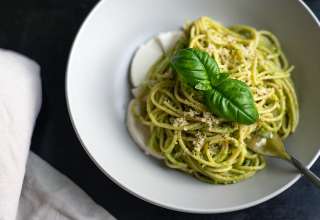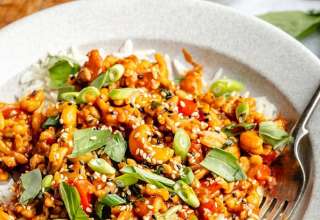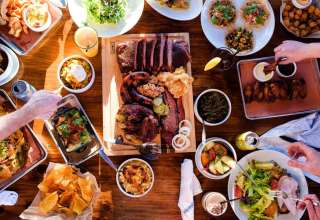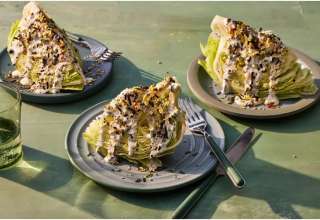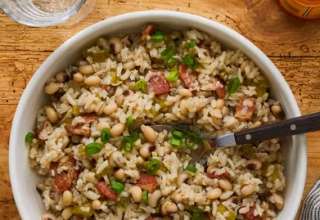
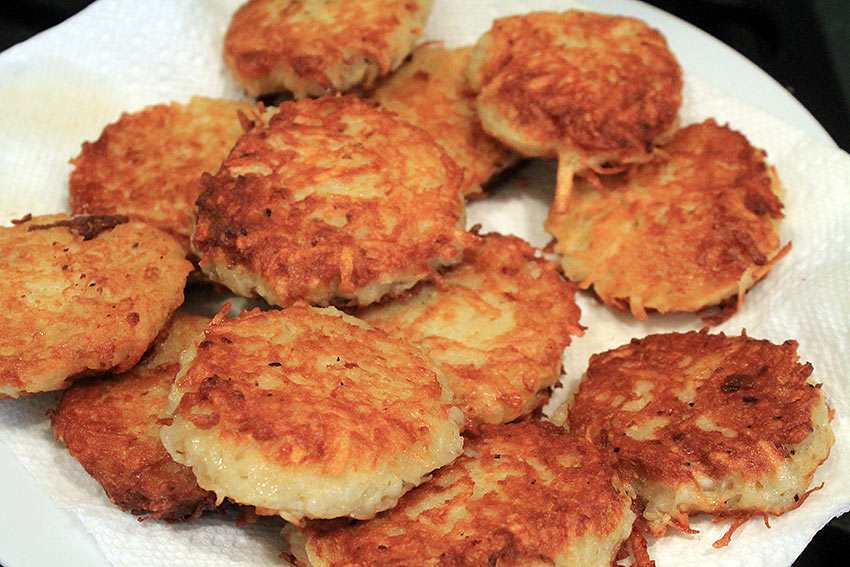
Latke (pronounced LOT-keh, LOT-kah or LOT-kee) is Yiddish for “pancake.” On Chanukah, it is traditional to serve latkes (most often potato) fried in oil to celebrate the Chanukah miracle, which involved the oil of the Temple Menorah lasting for eight days instead of just one. Jews eat foods that reflect the significance of a holiday — such as matzah on Passover and apples dipped in honey on Rosh Hashanah — and Chanukah is no exception. For at least the last thousand years, Jews have traditionally eaten oily foods on Chanukah.
The latke is one of those Jewish foods that feels steeped in tradition, as if it’s been made the same way since the days of the Maccabees.
But in a revelatory article, Atlantic senior editor Yoni Appelbaum explains that the latke as we know it — grated potatoes fried in olive oil — is a relatively new culinary invention. Here, in brief, is the Chanukah staple’s origin story.
As early as the 14th century: Deep-fried ricotta cheese
That’s right. Latkes were originally an Italian cheese dish.
According to Appelbaum, they were inspired by The Book of Judith, set hundreds of years before the Maccabean Revolt. The book, from the Catholic Bible, tells the story of a daring widow who seduced and killed the Assyrian general Holofernes to save Israel from invaders.
In an obscure Hebrew version of the story, Judith distracted Holofernes in part by feeding him pancakes “salted and mixed with cheese.” Italian Jews adopted the custom of deep-frying cheese pancakes on Hanukkah to honor the story, which they apparently conflated with that of the Maccabees.
Up to the 19th century: Grain pancakes
Appelbaum notes that potatoes were originally cultivated in South America and weren’t introduced to Europe by Spanish explorers until the second half of the 16th century. Potatoes weren’t widely grown and consumed in Eastern Europe — the Old World from which many Jews emigrated to the United States — for a couple more centuries.
Until the early 19th century, Eastern European Jews made pancakes from grains, such as buckwheat and rye, according to food historian Gil Marks. Those were among the few crops available to them during the frosty early winter, when Chanukah is celebrated.
The 19th century: Potatoes fried in schmaltz, not oil
In the 1800s, even after potatoes took root in Eastern Europe, latkes were still not fried in olive oil (as they are today, providing a convenient link to the oil-rich story of Chanukah). Olive trees were uncommon in the region, and people cooked with schmaltz, fat rendered from chickens, geese or beef.
In fact, schmaltz remained a traditional latke ingredient well into the 20th century. Appelbaum cites a stipulation from a 1927 issue of The American Mercury magazine (which he says includes the first mention of the word “latke” in English) that the potato pancakes be “fried in schmaltz.”
From the 20th century: Today’s latke — potatoes fried in oil
The advent in 1911 of Crisco, the first shortening made entirely of vegetable oil, changed the way latkes (and many other fried foods) were made. Kosher Crisco was once marketed as the miracle for which the “Hebrew race had been waiting 4,000 years.”
When Crisco “fell from favor,” as Appelbaum writes, olive oil took its place at the Hanukkah table — and the modern latke was born
Why Latkes Go With Sour Cream
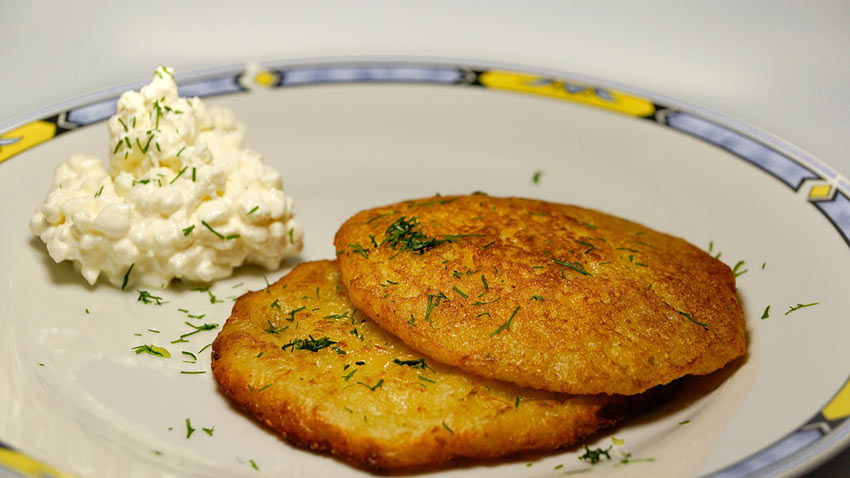
Potato latkes are traditionally served with applesauce and/or sour cream, but they are perfectly tasty with nothing at all In addition to being delicious with fried foods, sour cream is symbolically significant. Dairy treats are reminiscent of the milk-based (and intoxicating) meal that the brave Judith fed the Greek general before she decapitated him in his sleep.
The Modern Day Chanukah Latke Recipe
Ingredients:
5 large potatoes, peeled
1 large onion
3 eggs
1/3 cup flour
1 tsp. Salt
¼ tsp. pepper
¾ cup oil for frying
Use: 10-inch skillet
Yields: 4 to 6 servings
Grate potatoes and onion on the fine side of a grater, or in a food processor; or put in a blender with a little water.
Strain grated potatoes and onion through a colander, pressing out excess water. Add eggs, flour, and seasoning. Mix well.
Heat ½ cup oil in skillet. Lower flame and place 1 large tablespoon batter at a time into hot sizzling oil and fry on one side for approximately 5 minutes until golden brown. Turn over and fry on other side 2 to 3 minutes.
Remove from pan and place on paper towels to drain excess oil. Continue with remaining batter until used up, adding more oil when necessary.
Serve with applesauce and/or sour cream on the side.
